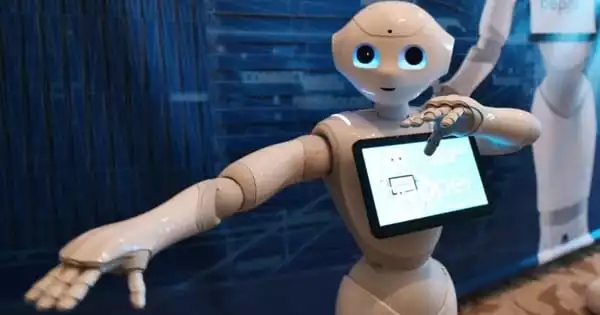Surprisingly, recent technological advances have enabled robots to express emotions. Despite the fact that emotional expression is prized in the sphere of service, understanding emotions in human-robot contact is still a work in progress.
Researchers have developed a robot with an internal weight that may appear to show emotions while reading text messages. It can also remind people not to become agitated, which may help them deal with upsetting facts.
Scientists at the University of Tsukuba’s Faculty of Engineering, Information, and Systems developed a text message mediation robot that can help users control their rage when they receive distressing news. As we progress toward a future with more digital communications, this device could assist improve social relationships.
While a quick text message apology is a quick and easy method for friends to let us know they will be late for a planned meet-up, it lacks the human touch that would accompany an explanation face-to-face, or even over the phone. It is more likely to be distressing when we are unable to comprehend the emotional weight underlying our friends’ remorse at having to make us wait.
With the medium of written digital communication, the lack of social response redirects focus away from the sender and toward the substance of the message itself. The mediator robot was created to suppress the user’s wrath and other negative interpersonal impulses, such as thoughts of vengeance, while encouraging forgiveness.
Professor Fumihide Tanaka
Now, researchers at the University of Tsukuba have created OMOY, a portable robot with a movable weight controlled by mechanical components inside its body. The robot could portray synthetic emotions by altering its internal weight. The robot was used as a middleman for reading text messages. A text containing undesirable or frustrating news may be followed by an advice from OMOY not to become upset, or even pity for the user.
“With the medium of written digital communication, the lack of social response redirects focus away from the sender and toward the substance of the message itself,” writes author Professor Fumihide Tanaka. The mediator robot was created to suppress the user’s wrath and other negative interpersonal impulses, such as thoughts of vengeance, while encouraging forgiveness.
One of the most fascinating yet disruptive practices to date has been the incorporation of artificial intelligence in customer service and experience. With the ongoing global health crisis, no one can deny that service automation is altering the paradigm away from high-touch and toward high-tech. Robots are increasingly being used in a variety of settings, including retail, airports, hotels, restaurants, and transportation. Robots used in service situations can be broadly characterized as utilitarian, cartoonish, and humanlike, or mixed robots, based on their appearance.

The researchers put 94 people through a test with a message like “I apologize for being late. I had forgotten about the appointment. Can you hold out another hour?” The team discovered that OMOY could lower unpleasant emotions. “The mediator robot can transmit a vexing message before offering its own opinion. We discovered that when this discourse is followed with the necessary weight shifts, the user perceives the robot’s ‘intention’ to help them calm down” Tanaka, Professor.
The weight shifts caused by the robot’s body expression did not require any special exterior components, such as arms or legs, implying that internal weight movements might diminish a user’s anger or other negative emotions without the usage of rich body gestures or facial expressions.
The researchers then taught a machine-learning algorithm to label the films, recognizing the sort of social contact, the emotions displayed, and the strength of each child’s internal state, allowing them to compare which child seemed sadder or more thrilled.
According to Dr. Edmunds: “People have already attacked or vandalized robot delivery systems, typically because they feel threatened. The goal is to develop a robot that can respond to human emotions in tough situations and pull itself out of difficulties without being monitored or taught what to do. That doesn’t happen right now since robots are programmed to obey scripts.”
Madeleine Bartlett of the University of Plymouth stated: “It is critical for a social robot to recognize human internal feelings, such as stress, as well as the level or severity of such states. Different levels of stress necessitate different responses. Low-level stress may only necessitate the robot backing away from the human, whereas high-level stress may have the robot apologizing and exiting the encounter.”
















